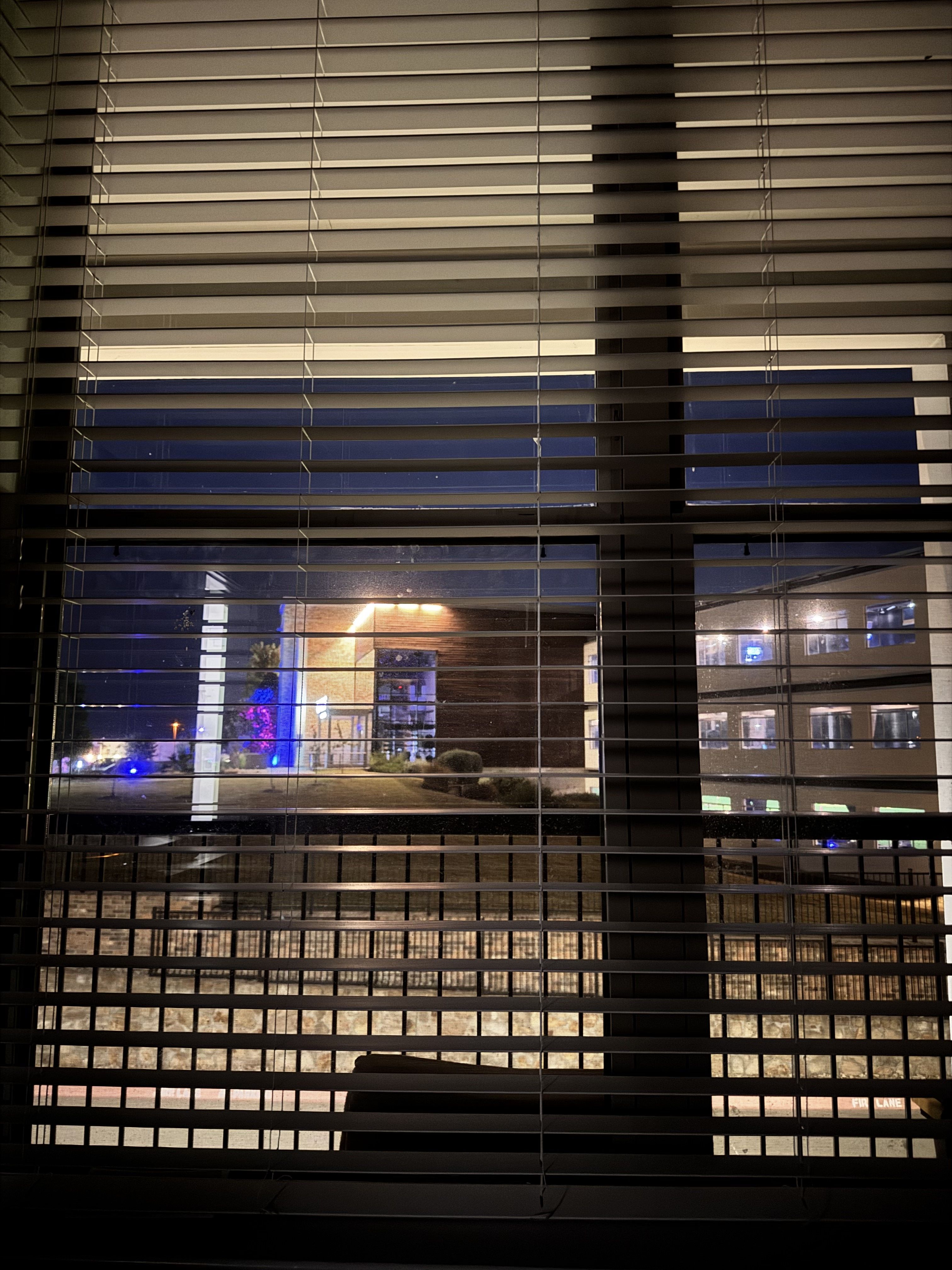Research Highlights
- Higher levels of exposure to artificial light at night were linked to increased stress-related activity in the brain, inflamed arteries and a higher risk of heart disease, according to a small study of adults in Boston.
- Nighttime light pollution appeared to affect heart health, making it an environmental factor that could be changed to help reduce heart disease in communities with higher levels of nighttime light, researchers said.
- Note: The study featured in this news release is a research abstract. Abstracts presented at American Heart Association’s scientific meetings are not peer-reviewed, and the findings are considered preliminary until published as full manuscripts in a peer-reviewed scientific journal.
DALLAS - November 3, 2025 (NEWMEDIAWIRE) - Higher levels of artificial light at night were linked to increased stress-related activity in the brain, inflamed arteries and a higher risk of heart disease, according to a preliminary study to be presented at the American Heart Association’s Scientific Sessions 2025. The meeting, Nov. 7-10, in New Orleans, is a premier global exchange of the latest scientific advancements, research and evidence-based clinical practice updates in cardiovascular science.

Artificial light at night, or nighttime light pollution, is a nearly universal feature of modern cities, according to the study. This first-of-its-kind study reviewed brain scans and satellite images to show a biological pathway linking nighttime light exposure to heart disease.
“We know that environmental factors, such as air and noise pollution, can lead to heart disease by affecting our nerves and blood vessels through stress. Light pollution is very common; however, we don't know much about how it affects the heart,” said study senior author Shady Abohashem, M.D., M.P.H., head of cardiac PET/CT imaging trials at Massachusetts General Hospital and an instructor at Harvard Medical School in Boston.
All participants had the same combined Positron Emission Tomography/Computed Tomography (PET/CT) scan. This study of 450 adults only included subjects without heart disease and no active cancer. “This is a routine imaging test at my hospital,” Abohashem said. “The CT portion provides detailed anatomy, while the PET portion reveals metabolic activity in tissues. Using both imaging techniques together allows for the measurement of brain stress activity and arterial inflammation in a single scan.”
The analysis found:
- People exposed to higher levels of artificial light at night had higher brain stress activity, blood vessel inflammation and a higher risk of major heart events. This information was collected from medical records and evaluated by two cardiologists who were blinded, meaning they were unaware of any information that could influence their decisions.
- The greater the artificial night light exposure, the higher the risk of heart disease development. Every standard deviation increase in light exposure was associated with about 35% and 22% increased risk of heart disease over five- and 10-year follow-up periods, respectively. These associations remained after accounting for traditional risk factors and other socio-environmental exposures like noise pollution and socioeconomic status.
- In addition, these heart risks were higher among participants who lived in areas with additional social or environmental stress, such as high traffic noise or lower neighborhood income.
- Over a 10-year follow-up period, 17% of participants had major heart conditions.
“We found a nearly linear relationship between nighttime light and heart disease: the more night-light exposure, the higher the risk. Even modest increases in night-time light were linked with higher brain and artery stress,” Abohashem said. “When the brain perceives stress, it activates signals that can trigger an immune response and inflame the blood vessels. Over time, this process can contribute to hardening of the arteries and increase the risk of heart attack and stroke.”
However, to counter the effects of artificial light at night, he suggested that cities could reduce unnecessary outdoor lighting, shield streetlamps or use motion-sensitive lights. On a personal level, “people can limit indoor nighttime light, keeping bedrooms dark and avoiding screens such as TVs and personal electronic devices before bed,” he said.
“These findings are novel and add to the evidence suggesting that reducing exposure to excessive artificial light at night is a public health concern,” said Julio Fernandez-Mendoza, Ph.D., DBSM, FAHA, who is on the writing committee of Multidimensional Sleep Health: Definitions and Implications for Cardiometabolic Health: A Scientific Statement From the American Heart Association.
Last week (Oct. 28), the Association issued a scientific statement on the Role of Circadian Health in Cardiometabolic Health and Disease Risk. The new statement also indicates that light pollution is a major factor disrupting body clocks and can suppress melatonin, delay sleep onset and even at low levels has been associated with increased risk of cardiovascular disease.
“We know too much exposure to artificial light at night can harm your health, particularly increasing the risk of heart disease. However, we did not know how this harm happened,” Fernandez-Mendoza said. “This study has investigated one of several possible causes, which is how our brains respond to stress. This response seems to play a big role in linking artificial light at night to heart disease.” Fernandez-Mendoza, who was not a part of the study, is also a professor of psychiatry, neuroscience and public health sciences and director of behavioral sleep medicine at Pennsylvania State University College of Medicine in Hershey, Pennsylvania.
The study had several strengths, including using state-of-the-art PET/CT imaging to measure brain stress and artery inflammation, combined with satellite light data and long-term follow-up for heart events.
However, the study also has several limitations. Importantly, it is an observational study, an analysis of previously collected information; therefore, it cannot prove a direct cause-and-effect relationship between any of the variables reviewed. Second, the study included participants who received health care at only one hospital system, which means the participant group may not represent a diverse group of people, and the findings cannot be generalized to represent a larger population group.
Study details:
- Researchers conducted a review of health records for 466 adults, comprising 43% men, with a median age of 55 years. Of the participants, 89.7% were white and 10.3% were non-white. All participants underwent a PET/CT scan at Massachusetts General Hospital in Boston between 2005 and 2008.
- Exposure data were obtained from the 2016 New World Atlas of Artificial Night Sky Brightness, which integrates upward radiance data from the Visible Infrared Imaging Radiometer Suite Day/Night Band aboard the Suomi National Polar-orbiting Partnership satellite, coupled with radiative transfer modeling to estimate ground-level zenith sky brightness. Artificial brightness is defined as the zenith luminance of the night sky attributable exclusively to human-generated light sources, excluding natural sources such as starlight, airglow and moonlight.
- The amount of nighttime light at each person’s home was measured, as well as stress signals in the brain and signs of artery inflammation on scans.
- The study participants were scanned between 2005 and 2008 and retrospectively followed up to the end of 2018. During follow-up, 79 participants, or 17%, had major heart problems.
“This research indicates that light pollution is more than just an annoyance; it could also increase the risk of heart disease. We hope clinicians and policymakers will consider nighttime light exposure when developing prevention strategies,” Abohashem said. “We want to expand this work in larger, more diverse populations, test interventions that reduce nighttime light, and explore how reducing light exposure might improve heart health.”
Co-authors, disclosures and funding sources are listed in the abstract.
Statements and conclusions of studies that are presented at the American Heart Association’s scientific meetings are solely those of the study authors and do not necessarily reflect the Association’s policy or position. The Association makes no representation or guarantee as to their accuracy or reliability. Abstracts presented at the Association’s scientific meetings are not peer-reviewed, rather, they are curated by independent review panels and are considered based on the potential to add to the diversity of scientific issues and views discussed at the meeting. The findings are considered preliminary until published as a full manuscript in a peer-reviewed scientific journal.
The Association receives more than 85% of its revenue from sources other than corporations. These sources include contributions from individuals, foundations and estates, as well as investment earnings and revenue from the sale of our educational materials. Corporations (including pharmaceutical, device manufacturers and other companies) also make donations to the Association. The Association has strict policies to prevent any donations from influencing its science content and policy positions. Overall financial information is available here.
Additional Resources:
- Multimedia is available on the right column of the release link including a video interview In English with American Heart Association volunteer expert: Julio Fernandez-Mendoza, a professor of psychiatry, neuroscience and public health sciences and director of behavioral sleep medicine at Pennsylvania State University College of Medicine in Hershey, Pennsylvania.
- Spanish news release (includes Spanish video interview)
- Link to abstract in the American Heart Association’s Scientific Sessions 2025 Online Program Planner
- American Heart Association scientific statement news release: Sleep matters: duration, timing, quality and more may affect cardiovascular disease risk (April 2025)
- American Heart Association news release: More exposure to artificial, bright, outdoor nighttime light linked to higher stroke risk (March 2024)
- About Scientific Sessions 2025
- For more news about the American Heart Association’s Scientific Sessions 2025, follow us on X @HeartNews #AHA25
About the American Heart Association
The American Heart Association is a relentless force for a world of longer, healthier lives. Dedicated to ensuring equitable health in all communities, the organization has been a leading source of health information for more than one hundred years. Supported by more than 35 million volunteers globally, we fund groundbreaking research, advocate for the public’s health, and provide critical resources to save and improve lives affected by cardiovascular disease and stroke. By driving breakthroughs and implementing proven solutions in science, policy, and care, we work tirelessly to advance health and transform lives every day. Connect with us on heart.org, Facebook, X or by calling 1-800-AHA-USA1.
For Media Inquiries and American Heart Association Expert Perspective: American Heart Association Communications & Media Relations: 214-706-1173,ahacommunications@heart.org
Karen Astle: Karen.Astle@heart.org
For Public Inquiries: 1-800-AHA-USA1 (242-8721)
heart.org and stroke.org
View the original release on www.newmediawire.com







